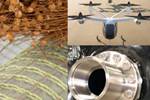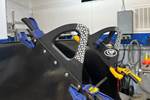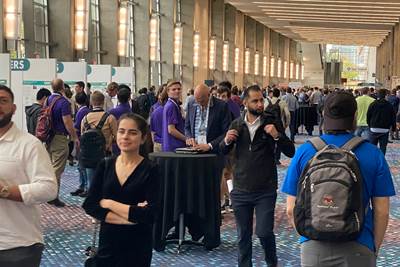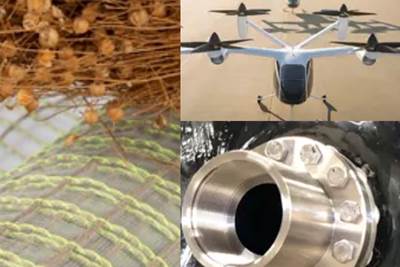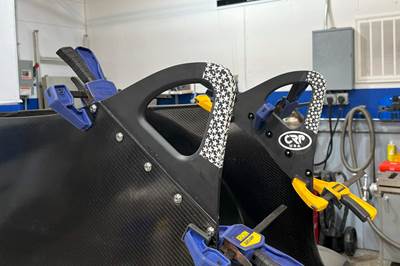Who's ready for the Olympics?
With the 2024 Summer Olympics in Paris, this year’s JEC World is bound to be abuzz with talk of this year’s event — from the use of composites in sporting equipment to the roles they play in AAM.
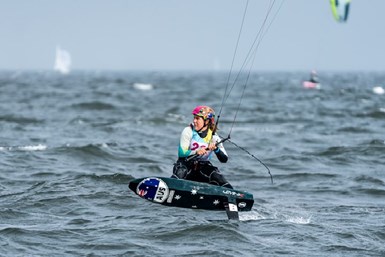
Australian kite-foiler Breiana Whitehead. Source | Beau Outteridge
Welcome to CW’s March issue — hopefully in your hands just in time for this year’s JEC World international composites trade show. Perhaps you’re even reading this editorial on your way to Paris.
Needless to say, CW is excited for JEC World. With up to 40,000 visitors that are expected to attend and more than 1,300 exhibitors, the event and the conversations we have on the show floor often set the stage for many of the stories and projects that our team explores the following year.
Something else to look forward to are the preparations being made for the 2024 Summer Olympics. Paris City Hall officials recently inaugurated the city’s first purpose-built site for the games, touting recycled materials used for the venue as an example of the city’s commitment to hosting a “sustainable” game. Indeed, sustainability seems to be a core aspect of the messaging surrounding the Olympics in general, extending from efforts to address travel-associated emissions to the use of recycled materials in everything from food packaging to construction materials to sports equipment.
One question likely on the minds of many at JEC World is whether we’ll see air taxis in action at the Paris Olympics. Numerous announcements have been made regarding using the event as an opportunity to trial eVTOL passenger flights. At least two advanced air mobility companies — Volocopter and AutoFlight — have set their sights on conducting experimental flights during the Games. While the goal of having air taxis provide shuttle services during the Olympics has been met with opposition from the Paris City Council, many investments have been made into building a vertiport network with the aim of making Paris one of the world’s first active AAM networks. Per this initiative, international airport operator Groupe ADP has begun construction of several vertiports across the northern area of Paris.
The Olympics themselves will also be something worth watching from a composite materials perspective. During the past few months, CW has reported on numerous composite applications that will play a role in the Olympic Games.
For example, in January, it was announced that Australian kite-foiler Breiana Whitehead collaborated closely with ATL Composites on the design and construction of boards for her Olympic performance. In March, Hethel, U.K.-based sports car and hypercar manufacturer Lotus Cars and British Cycling developed a new track bike for Team Great Britain riders to use in the competition.
Sustainability seems to be a core aspect of the messaging surrounding the Olympics.
The theme of sustainability, which I mentioned is a large part of the messaging for the Olympics, is further exemplified through this issue’s Work in Progress story by technical editor Hannah Mason on efforts to expand the circularity of carbon fiber in sports equipment. In early 2022, the World Sailing Trust began a new collaborative initiative called the Carbon Fibre Circular Alliance (CFCA), with the goals of expanding awareness and creating solutions for carbon fiber composite recycling and circularity within sectors of the sporting goods industry. CFCA partners, including Lineat Composites, are working to reclaim short carbon fibers from end-of-life sports equipment, and realign them to create prepreg tapes used to make new equipment. One example is CFCA partner Starboard’s reclaimed and realigned carbon fiber foil to be featured in the 2024 Summer Olympics. Read the full article on p. 24.
Not related to the Olympics, but still on task with sustainability efforts, is this month’s feature and cover story on p. 30 from contributing writer Stephen Ditmore. The article is a roundup of efforts by material suppliers and boatbuilders to forward the use of sustainable materials in the boatbuilding industry through the use of infusible, semi-thermoplastic resins, bio-epoxies and recovered composite materials.
All of these applications, initiatives and events — whether it’s chatter about the upcoming Summer Olympic Games, sustainability and environmental responsibility or the rapidly evolving eVTOL market — are sure to be represented at JEC World in some capacity. We have a lot to look forward to. See you in Paris!
Related Content
Bio-based acrylonitrile for carbon fiber manufacture
The quest for a sustainable source of acrylonitrile for carbon fiber manufacture has made the leap from the lab to the market.
Read MoreThe lessons behind OceanGate
Carbon fiber composites faced much criticism in the wake of the OceanGate submersible accident. CW’s publisher Jeff Sloan explains that it’s not that simple.
Read MorePlant tour: Teijin Carbon America Inc., Greenwood, S.C., U.S.
In 2018, Teijin broke ground on a facility that is reportedly the largest capacity carbon fiber line currently in existence. The line has been fully functional for nearly two years and has plenty of room for expansion.
Read MoreCryo-compressed hydrogen, the best solution for storage and refueling stations?
Cryomotive’s CRYOGAS solution claims the highest storage density, lowest refueling cost and widest operating range without H2 losses while using one-fifth the carbon fiber required in compressed gas tanks.
Read MoreRead Next
What’s new for 2024?
CompositesWorld discusses recent changes, upcoming events and strategies for the upcoming year.
Read MoreLooking back at 2023 to look forward
As 2024 begins, we look at trending topics and our most-read stories in 2023, plus highlight new content for the new year.
Read MoreCRP USA 3D printing composites meet critical needs of bobsledding sport
Components critical to a bobsled’s functionality — push handles, hand grips and seats — were tailored from Windform materials, heightening both performance and safety for athletes’ racing in the 2026 Winter Olympics.
Read More


